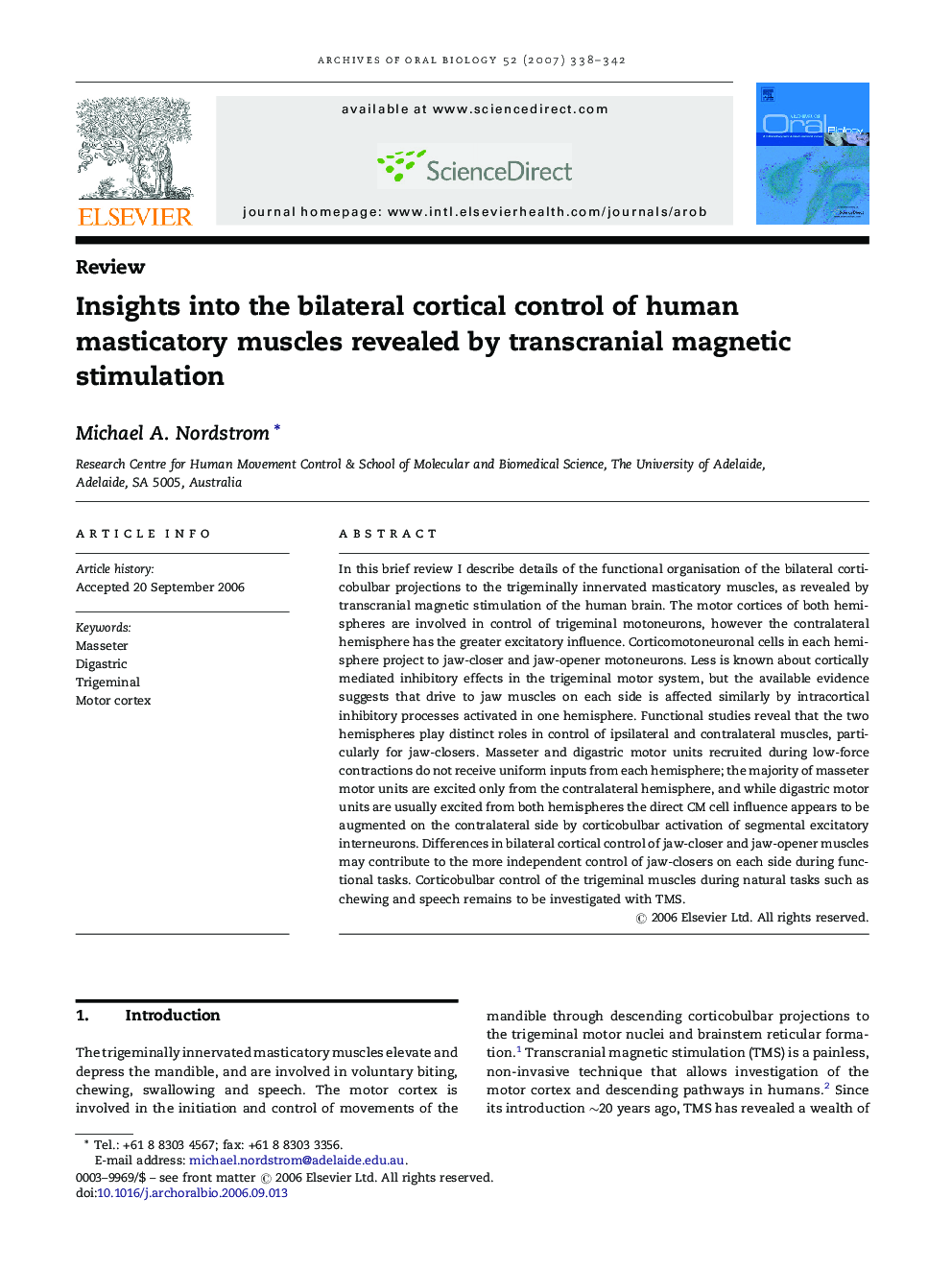| Article ID | Journal | Published Year | Pages | File Type |
|---|---|---|---|---|
| 3121957 | Archives of Oral Biology | 2007 | 5 Pages |
In this brief review I describe details of the functional organisation of the bilateral corticobulbar projections to the trigeminally innervated masticatory muscles, as revealed by transcranial magnetic stimulation of the human brain. The motor cortices of both hemispheres are involved in control of trigeminal motoneurons, however the contralateral hemisphere has the greater excitatory influence. Corticomotoneuronal cells in each hemisphere project to jaw-closer and jaw-opener motoneurons. Less is known about cortically mediated inhibitory effects in the trigeminal motor system, but the available evidence suggests that drive to jaw muscles on each side is affected similarly by intracortical inhibitory processes activated in one hemisphere. Functional studies reveal that the two hemispheres play distinct roles in control of ipsilateral and contralateral muscles, particularly for jaw-closers. Masseter and digastric motor units recruited during low-force contractions do not receive uniform inputs from each hemisphere; the majority of masseter motor units are excited only from the contralateral hemisphere, and while digastric motor units are usually excited from both hemispheres the direct CM cell influence appears to be augmented on the contralateral side by corticobulbar activation of segmental excitatory interneurons. Differences in bilateral cortical control of jaw-closer and jaw-opener muscles may contribute to the more independent control of jaw-closers on each side during functional tasks. Corticobulbar control of the trigeminal muscles during natural tasks such as chewing and speech remains to be investigated with TMS.
